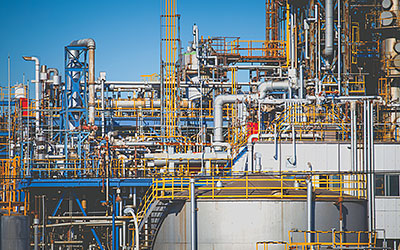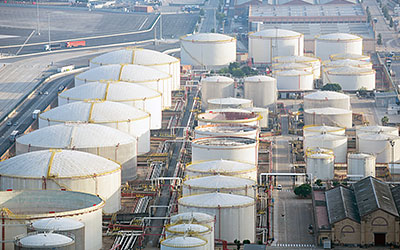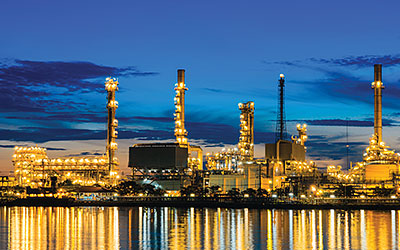Refinery
Sulfur Recovery Unit Fouling
As with most catalyst processes, Sulfur Recovery Unit fouling is an issue. Depending on the design of the reactor in the refinery, you may also find this unit called a Claus Unit.

Chemical Utilized
Sulfur Recovery Unit Process
The Sulfur Recovery Unit (SRU) converts hydrogen sulfide gas into elemental sulfur. The H2S feed comes from both the Amine Plant and the Sour Water Stripper. By using a hot air combustion process and a catalyst, SO2 converts to sulfur.
Additionally, there may be a secondary Amine Plant downstream of the SRU as part of the process to further reduce the sulfur content of the effluent gas steam. These are generally referred to as SCOT Units (Shell Claus Off-gas Treater). If SCOT Unit cleaning is required, review the Amine Plant page for the chemical cleaning description and solution.
1
Initially, air and acid gas streams are burnt to convert H2S to SO2.
2
Then the SO2 passes over a catalyst bed containing H2S, which produces elemental sulfur, and the reaction is very exothermic.
3
Next, hot gases go to the condenser to cool. The resulting precipitate, liquid sulfur, is removed.
4
The process is repeated several times, each time the gas goes through a reaction it produces additional sulfur.
What Problems do the Sulfur Recovery Unit Cause?
Because the boiler feed uses water, it causes water scaling. The water scaling affects the boiler feed equipment and transfer lines. The equipment fouling causes flow rate issues and decreases the efficiency of the unit.

Our Chemical Cleaning Solution
For sulfur recovery unit fouling decontamination chemical cleaning will remedy the issue.
1
Remove Water Scale Fouling
To clean the waste heat boiler, use an acid-based solvent, such as FQE® Scale-Solv and the fill and soak method or the circulation method.



